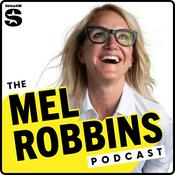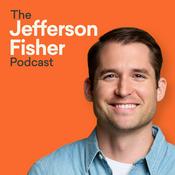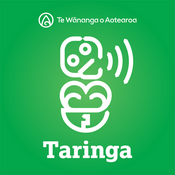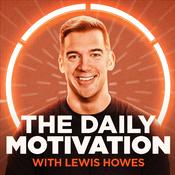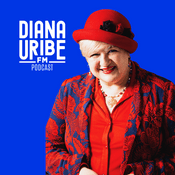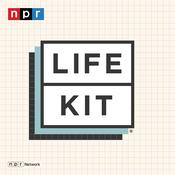217 episodes

Growing & Developing with your Horse Q&A
12/12/2025 | 39 mins.
This week’s Growing and Developing With Your Horse Q and A was a really special one, as my mom JoElyn stepped in to host it. She shared so much wisdom from her own riding journey, from choosing horses to developing bend, setting goals, and learning to truly love the horse you have at every stage.Why bend mattersJoElyn spent time explaining why bend is so foundational. Bend supports safety, helps the horse stay attentive, and allows the inside hind leg to step under and strengthen the body. True bend comes from the rib cage, not just the neck, and you can see it when the head and tail stay on the same line of the circle.Your body influences the bendShe reminded us that rider position plays a big role. If we collapse or tip, it becomes harder for the horse to bend around the inside leg. Thinking about your alignment and allowing your body to guide the bend can make your aids much clearer and more effective.Groundwork and patternsGroundwork is a powerful way to improve bend. Asking for more bend on the ground helps it show up more easily under saddle, and riding clear patterns helps keep both horse and rider organized and balanced.Goals and long term developmentThere was a thoughtful discussion about goals, from big long term dreams to small daily steps. Breaking goals down and focusing on rider position, learning, visualization, and consistency helps you make progress even when saddle time is limited.Loving the horse you haveOne of the most touching parts of this conversation was the reminder that loving your horse matters, regardless of the level. Horses can continue to grow, improve, and connect with us deeply, even as their bodies change with age.Thank you for being part of this community and for bringing so much care and thoughtfulness to your horses and your riding.Happy riding,AmeliaPS Bootcamp is coming up soon. If you have not signed up yet, be sure to do that so you do not miss the daily lives, exercises, and motivation to head into the new year feeling focused and inspired. RSVP here for bootcamp.

Horse Personality in Training Q&A
05/12/2025 | 30 mins.
Last night’s Q and A was such a fun conversation about horse personalities and how to adjust your riding to match the horse you have. Stacie joined us live, which was a treat because many of you know her from the comments section and as a Strides member. We covered everything from reading your horse’s natural tendencies to adjusting your own energy and building confidence in both young and experienced horses.Understanding personalitySome horses are hot, some laid back, and many shift depending on our energy. The big takeaway was noticing the small signs and matching your approach. Raise your energy for a dull horse. Slow everything down for a sensitive one.Groundwork builds confidenceFor green or new horses, groundwork is the place to start. Leading, bending, yielding, and responding to pressure help the horse feel safe and give you tools you can use later in the saddle. It has made a huge difference for Stacy and her boys.The basics always winWinter is the perfect time to revisit stretching, bending, rhythm, and suppleness. Going back to basics makes everything easier when you start schooling movements again.Thank you to the Dressage FoundationWe also highlighted the Dressage Foundation and the many grants that support riders. Stacie recently received the Gifted Memorial Grant, and our own “Dressage for All” Youth Fund will award its first grants this spring. Community support truly keeps our sport thriving.Thank you all for joining and for being part of this amazing community. Your questions and your stories are what make these live sessions so meaningful.Happy ridingAmeliaPS. Don’t forget to RSVP for Bootcamp coming in January!

Independent Seat Webinar Replay
29/11/2025 | 1h 38 mins.
Yesterday I held one of my all time favorite webinars, the Independent Seat Webinar, and I’m excited to share the replay with you. If you’ve ever wondered why your horse feels stiff, why your hands won’t stay quiet, or why transitions suddenly fall, it usually comes back to one thing: your seat.I hope it inspires you to make this winter your season for building real lasting stability in the saddle.If you want more step by step guidance and personalized feedback on your position, the Rider Position Blueprint is open now, with a 50% discount available through until Wednesday Dec 3rd.

Soft Hands & Following Elbows Q&A
28/11/2025 | 36 mins.
I hope you all had a wonderful Thanksgiving!Last night Nicole from Team Amelia stepped in to teach a super helpful session on soft hands, following elbows, and how your alignment and seat create the foundation for everything. If you have ever struggled to keep your hands steady, wondered why your elbows lock, or felt like your horse braces when you pick up the contact, this Q&A has so many clear explanations and practical tips you can take straight to the saddle.Why soft hands start in your seatNicole breaks down how your alignment affects your entire arm position and shows why your hands cannot stay quiet unless your seat is absorbing the horse’s motion. She explains the difference between following elbows in walk and canter versus your elbows in the trot and how to feel the movement through your core instead of through your reins.How to actually teach your horse to listen to lighter aidsInstead of pulling or fussing with the reins, she explains the simple sequence of fingers, wrist, elbow and how horses learn to respond to the smallest whisper when the progression is consistent. She also explains why soft hands are not loose hands and how subtlety always depends on the clarity of your seat.Understanding the training scaleIf your horse feels heavy, braced, or inconsistent in the connection, she explains how the issue rarely starts in the hands. She walks through the steps of the training scale and explains how each layer influences the feeling in your reins.Following the motion in each gaitShe uses her famous shoelace demo to show why your elbows must open and close in walk and canter and why locked elbows in canter lead to tension and loss of balance. She also shares practical tips for keeping your hands from posting with your body in the trot.Fixing common problemsShe also shared some tips for fixing some common problems many riders experience such as reins slipping, how to supple the inside rein when holding a whip, how to feel the horse’s mouth without pulling on it, how to avoid hollowing your back when you bring your shoulders back, and more useful tips!Coming upIf this Q&A got you thinking about how much your seat influences your hands, my Independent Seat Webinar will take you even deeper, it's at 8am PT on Friday 28th November. RSVP Here! I'll cover how to ride from your core, absorb movement without collapsing, and more! I hope to see you there!Happy ridingAmelia

Effective Leg & Following Seat Q&A
21/11/2025 | 32 mins.
This week I'm travelling so Nicole from Team Amelia stepped in to host a Q&A on developing a clearer leg, a softer following seat, and more effective communication with your horse. If you have ever wondered why your aids feel muddled, why your horse braces in transitions, or how to use your seat without gripping or driving, this session is full of ideas that will help everything make more sense.What she covered:Nicole breaks down the quiet signals your horse listens for and how subtle changes in your body can transform the feel of your transitions.Why your inside leg solves more than you thinkIf leads are tricky, circles lose shape, or your horse drifts through the outside rein, she shares some simple adjustments that make a noticeable difference.Nicole also shares practical ways to keep communication sharp when your riding time is limited and your horse has extra energy.Coming upGrateful Week begins Monday with daily live sessions, and on Thanksgiving morning at 8am PT I will be sharing a very special announcement that I am incredibly excited about. I hope to see you there live.Happy ridingAmelia
More Education podcasts
Trending Education podcasts
About Dressage with Amelia
Listen to Dressage with Amelia, Keep The Change and many other podcasts from around the world with the radio.net app

Get the free radio.net app
- Stations and podcasts to bookmark
- Stream via Wi-Fi or Bluetooth
- Supports Carplay & Android Auto
- Many other app features
Get the free radio.net app
- Stations and podcasts to bookmark
- Stream via Wi-Fi or Bluetooth
- Supports Carplay & Android Auto
- Many other app features


Dressage with Amelia
download the app,
start listening.



